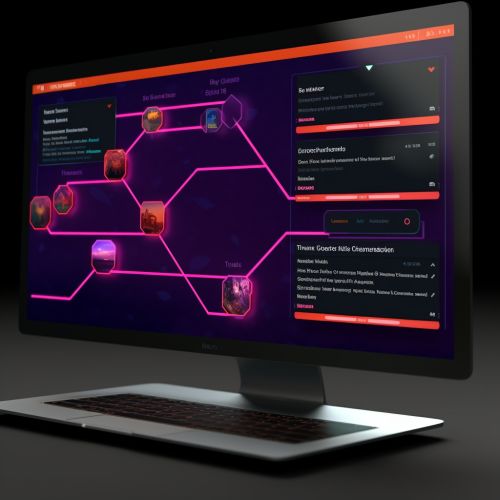Forward Chaining
Overview
Forward chaining is a method used in artificial intelligence and computer science, specifically in the field of expert systems. It is a type of inference engine strategy that starts with the available data and uses it to deduce further facts or conclusions. The process can be likened to a domino effect, where one piece of information triggers a chain of deductions.


Concept and Process
The concept of forward chaining is rooted in the principles of first-order logic. It is a data-driven deductive reasoning method that begins with the initial data, or the 'facts', and applies rules to these facts to deduce new information. This process continues until a desired goal is reached, or until no more new information can be inferred.
The process of forward chaining can be broken down into the following steps:
- The system starts with the known facts or data.
- The inference engine examines the rules and identifies those that are applicable based on the current facts.
- The system applies these rules to infer new facts.
- These new facts are added to the list of known facts.
- The process repeats from step 2, using the updated list of known facts.
- The process continues until a specified goal is reached, or until no more new facts can be inferred.
Rule-based Systems and Forward Chaining
In rule-based systems, rules are typically expressed in the form of IF-THEN statements. In the context of forward chaining, the 'IF' part of the rule is known as the antecedent or premise, and the 'THEN' part is known as the consequent or conclusion.
When using forward chaining, the system starts by examining the antecedents of all the rules. If the antecedent of a rule matches the current facts, then the rule is fired, and the consequent is added to the list of known facts. This process continues until a goal is reached or no more rules can be fired.
Applications of Forward Chaining
Forward chaining is widely used in various fields of artificial intelligence and computer science. Some of the key applications include:
- Expert systems: Forward chaining is a common strategy used in expert systems to simulate the decision-making process of human experts.
- Business rule engines: Forward chaining is used to automate business processes and decision-making based on a set of predefined business rules.
- AI in healthcare: Forward chaining is used in AI-based diagnostic systems to deduce potential diagnoses based on patient symptoms and medical history.
- Natural language processing: Forward chaining is used in language processing to infer semantic relationships between words and phrases.
Advantages and Disadvantages
Like any other method, forward chaining has its advantages and disadvantages.
Advantages include:
- It is a data-driven approach, which means it starts with known facts and makes logical deductions based on these facts.
- It is particularly useful in situations where the goal is not clearly defined.
- It can handle complex problems and large datasets.
Disadvantages include:
- It can be computationally expensive, as it may need to evaluate a large number of rules before reaching a conclusion.
- It may not be suitable for problems where the goal is clearly defined and a more direct approach could be more efficient.
